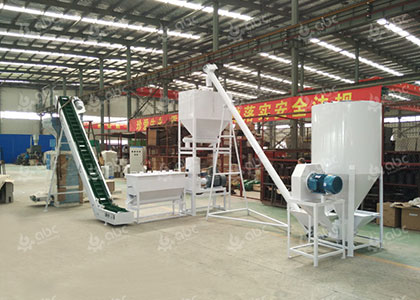Natural Gas Supply Gap Promotes Biomass Power Development
Natural Gas Supply and Demand Gap Highlights the Trend of Biomass Power Substitution
Biomass power is recognized as the fourth largest energy source after coal, oil and natural gas. The development of renewable energy to replace fossil energy has become a global consensus, and biomass power is becoming the main choice for replacing fossil energy in the world. Overall, as of the end of 2014, renewable energy accounted for 18.6% of the global energy terminal market and the total pellet fuel ratio is 73%.

Disassemble the budget for China's natural gas demand and supply trends in 2018 and draw conclusions as follow:
- Against the background of the rapid growth of world natural gas demand, there is a gap of about 15 billion square meters in China's natural gas supply in 2018.
- Domestic gas production is constrained by overall reserves and production capacity, and imported pipeline gas is constrained by long contract. Their output growth is relatively rigid, and the existing gap between supply and demand will be compensated mainly by the increase of natural gas import.
Biomass Power Raw Materials are Widely Used, and Pellet Fuel is Simple to Make
Biomass pellet fuels are usually made from biomass wastes such as crop roots, which can be found almost everywhere in crop planting bases with almost zero cost. Plant straw, peanut shell, hay and wood chips can be used to produce biofuel pellets.

It takes only a biomass pellet maker to make biofuel pellets from biomass raw materials. The plant straw was crushed into small segments of 5-8mm and then put into biomass pellet maker for granulation. Through the compression of the pellet machine, it is finally formed into biofuel pellets with smooth surface. After cooling, pellet fuel can be packaged and stored. Small-scale production of biofuel pellets can be purchased from homemade pellet mill, and large-scale production of recommended complete pellet manufacturing line. Biomass pellet fuel is widely used in home fireplace heating, barbecue, industrial boilers, power generation equipment, etc.
It Is No Accident That Biomass Is Widely Used In The Global Energy Market
First of all, biomass energy resources are large in total, highly accessible, and easily matched with the market. Biofuel pellets are important biomass power.
Second, the pellet fuel characteristics are in line with market demand. Energy has three terminal markets: heat, electricity and transportation. No matter what kind of new energy varieties, they need to enter the three major energy terminal markets to participate in competition, in order to win industrial development opportunities. From the global total energy consumption structure, heating accounts for about 50%, power generation accounts for about 20%, and transportation fuel accounts for about 30%. Heating is the largest energy consumer, and biomass power is the only renewable fuel that can be stored and transported to meet the diverse heating needs of the market.

Thirdly, the degree of energy and technology industrialization of biomass power resources is high. Biomass power can technically be used to generate electricity, heat, or as transportation fuel to replace fossil energy in the three major energy terminal markets. This is the comparative advantage of biomass power over other renewable energy varieties.
Fourth, biomass energy and existing fossil energy are chemical energy, similar in character. The replacement of fossil energy without changing the existing energy infrastructure is more economical than other new energy varieties.






